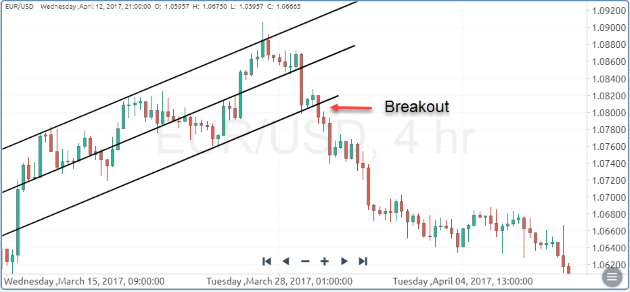When it comes to Forex trading, the strategy you choose will play a major role in your performance. While you also need to pay close attention to risk and trade management, Forex trading strategies ensure that you enter and exit the market at the appropriate price levels, and determines whether the trade will go in the right direction.
Given the importance of trading strategies, we’ve listed everything you need to know about Forex strategies so you’ll be able to pick the best one for you, based on your trading goals and personality. If you’re looking for free Forex trading strategies that work, look no further.
What is the best Forex trading strategy?
Each trader has different personality traits which need to be taken into account when choosing the best Forex trading strategy. Some traders like fast-paced trading on short timeframes, while others prefer longer-term trades which are held open for a few days or weeks. Whether you want to buy a Forex strategy or use a free Forex strategy, your personality plays an important role.
There are four main trading styles that you need to be aware of:
- Scalping
- Day trading
- Swing trading
- Position trading
Scalping is the fastest trading style, and sometimes involves holding trades for just a few seconds. Scalpers usually open dozens of trades during the day, and aim to profit on very small price movements, often closing the trade with only a few pips of profit. This is a fast-paced trading style, and not suitable for everyone. In terms of trading strategies, scalpers rely on short-term technical analysis and news trading and try to profit on sudden spikes in momentum.
Day traders hold their trades during the day, and close them by the end of the trading day. Generally, if you open at least four trades per week and hold them only during the day, you’re classified as day trader. Just like scalpers, day traders rely on technical analysis on relatively short timeframes, ranging from 15 minutes to up to one hour.
Swing traders hold their trades for a few days or weeks. Unlike day traders, swing traders are exposed to increased risk if the market conditions change overnight or over the weekend. However, the longer time horizon allows swing traders to have larger profit targets than day traders. A successful Forex strategy for a swing trader would be based on technical levels combined with some fundamentals.
Finally, position traders are very long-term traders, holding their trades for a few months in some cases. This calls for a deep analysis of market fundamentals, since fundamentals have a significant impact on long-term currency movements.
All successful Forex trading strategies take into account these differences in trading styles, so you need to determine first which style reflects your personality, and then choose the strategy that best fits your approach.
Technical vs. fundamental Forex trading techniques: which is better?
One of the most interesting questions is whether a trading strategy should be based on technicals or fundamentals. While there is a furious debate among Forex traders regarding which one is better, there is no single answer to that.
Technical Forex market strategies rely on the analysis of price charts and historic price data and are based on the three basic tenets of technical analysis, which state that (1) price discounts all information, (2) markets like to trend, and (3) history repeats itself.
The beautiful thing about technical trading strategies is that they can be used on any time frame, from 5 minutes to up to a month. Furthermore, technical analysis has proven its ability to generate consistent returns, given the trader analyses the market in the correct way. Unlike fundamentals, technical analysis also provides clear entry and exit points, which is a very important benefit of this type of analysis.
Fundamental Forex trading techniques, on the other hand, aim to analyse the underlying fundamentals of a currency. Those include changes in monetary policies, economic growth, unemployment and inflation rates, and interest rates, all the way to relative productivity and purchasing power parities among countries. Fundamental analysis is usually a tick more complicated than technical analysis, since traders need to know how to properly analyse various news sources and filter out the important events from the unimportant ones.
Fundamentals work best in the long-term, and need also to be analysed by swing traders who hold their trades for a few days to a few weeks. Even day traders understand the importance of fundamentals when important news releases move the market hundreds of pips in a few hours. However, since fundamentals don’t include exact entry and exit points, we’ll focus on technical trading strategies and assume that “the price discounts all fundamentals.” In fact, one of the most successful Forex market trading strategies is based purely on technicals.
Trend-following Forex trading methods
All financial markets like to trend. Traders like to join uptrends and downtrends and ride them as long as they persist. Given this market characteristic, trend-following trading strategies are extremely popular among traders, have a successful track record, and are in the group of Forex trading methods that work. In fact, a simple peak and trough analysis of the price chart is one of the best free Forex trading strategies that you can find online, and one of the top Forex trading strategies overall.

By using simple price action techniques, traders can determine whether there is an uptrend or downtrend in play and enter the market accordingly. Uptrends are formed by higher highs and higher lows, while downtrends consist of lower lows and lower highs. As soon as you determine the state the market is currently in, you can enter long in an uptrend and place your Stop Loss just below the recent higher low, or short in a downtrend and place your Stop Loss just above the recent lower high.
In addition, technical indicators such as the average directional movement index (ADX) can be used to identify trends and measure their strength.

The ADX returns a value between 0 and 100, and signals a trending market with readings above 25. Values between 25 and 50 signal strong trends, between 50 and 75 very strong trends, and above 75 extremely strong trends. The crosses of the –DI and +DI lines, combined with the value of the ADX, can be used as triggers to enter short or long, as shown in the following chart.

Forex strategies that focus on trend following are some of the most successful.
Countertrend trading strategies
Countertrend trading strategies, as their name suggests, involve opening positions in the opposite direction of the primary trend. Those trading strategies aim to trade the price corrections after strong up- and down-moves. While this can lead to profitable trading opportunities, it’s important to understand that trading in the opposite direction of the trend increases the risk of losses significantly.
Fibonacci retracements are often used with countertrend trading strategies, since they measure the correction of the primary move. In theory, the correction should reach around 50% of the primary move, making the 38.2%, 50%, 61.8%, and 78.6% Fibonacci retracements important levels to watch.

There are many free Forex trading strategies that are based on countertrend trading, but be cautious when taking trades in the opposite direction of the underlying trend. It’s best to wait for the correction to end and bounce off an important Fib level before entering the trade.
Breakout trading strategies
Breakout trading strategies are very popular among day traders, since the market tends to have a strong momentum after an important technical level breaks. Breakouts are mostly observed around major support and resistance levels, in chart patterns, and on trend lines and channels, and when used correctly, can lead to very lucrative trading opportunities.

Just like with trend-following trading strategies, breakouts produce the best results when traded in the direction of the underlying trend. Chart patterns are especially popular with breakout trading strategies, and many of those patterns have the ability to signal a continuation or even reversal of the existing trend. The head and shoulders pattern, for example, forms at the top of an uptrend (and at the bottom of a downtrend, called “inverse head and shoulders”) and signals that the underlying trend is about to reverse. However, pay attention to avoid fakeouts which can lead to lost trades.

A Forex trading strategy based on catching breakouts needs to take into account a number of technical tools mentioned above.
Backtest Your Forex market trading strategies
Whichever trading strategy you choose, it’s important to backtest your results using historical price data. This give you a chance to familiarise yourself with the entry and exit points of the strategy, and gives a feeling of the overall profitability of the strategy.
Make sure to trade with your new trading strategy on a demo account first, and never combine more than one strategy at a time. One of the biggest mistakes that new traders make is to jump from one strategy to another without taking the time to analyse its results during various market conditions.
Stick to one Forex trading strategy until you feel comfortable enough to use it on a real account, it returns profits, and matches your trading style. This will ensure that you’ve picked the Forex strategy that best fits your trading style.
Develop a complete trading plan
Once you've determined what your trading strategy is, it’s time to dedicate some time to develop your complete trading plan. A trading strategy is just one part of a trading plan, which along with a strategy, also includes risk and money management rules, certain times when its best to trade the market, and any other important trading aspects that can make or break a trader.
Even the best Forex trading method won’t produce positive results if you don’t know how to cut losses and let winners run. That’s why risk and money management, as part of a complete trading plan, are so important to a trader’s performance. The most successful Forex trading strategy needs to take into account your personality traits and trading style, and be combined with strict risk management rules.
